Blogs
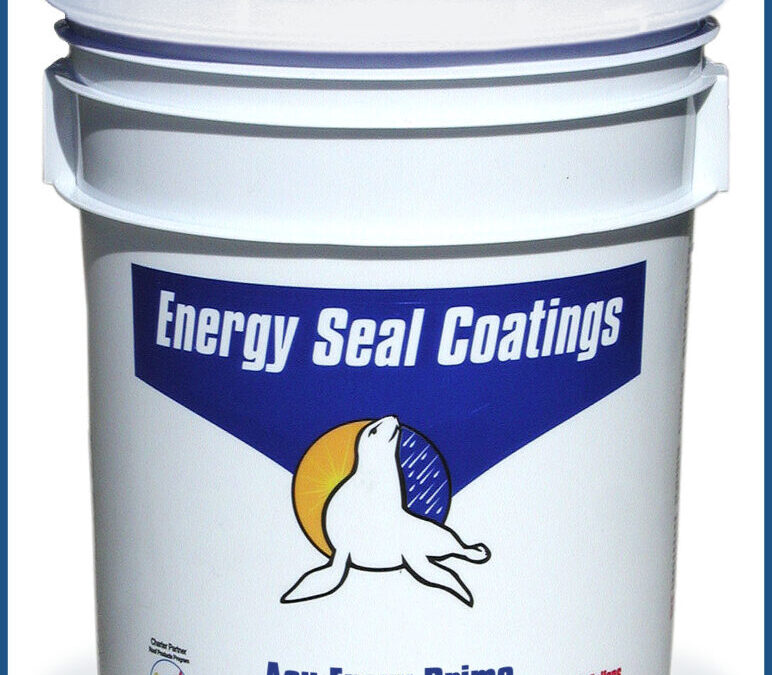
Cool Roofs Save Energy Even in Cold Climates
Yes, you read that right. The benefits of cool roofing in northern climates have been the subject of debate for years, but a consensus is growing that, under specific conditions, even reduced energy savings justify the outlay for cool roof technology.
Most of the factors that influence the decision are the same no matter where you live: the specifics of the local climate over the course of a year, the type of building, the patterns of energy use within it, and certain physical characteristics, like the placement of ducts and the amount of insulation.
Insulation introduces an additional complicating factor: Building codes have significantly increased the amount of insulation required in new commercial construction. The interiors of these buildings experience less temperature variance for cool roofs to mitigate.
In addition, cool roofs continue to mitigate rising temperatures even when that’s not helpful. Researchers have noted an association with small increases in winter energy use in cold areas because cool roofs reflect solar heat that would help warm the building in other locales.
Even after considering all of these counterarguments, cool roofs in cold climates remain worthwhile under most circumstances. The amount of otherwise useful energy that is wasted by reflection in the winter is generally less than the amount of undesirable summer heat for which air conditioning does not have to compensate.
Two factors help to explain this phenomenon. First, several characteristics of winter reduce the inevitable waste: shorter days, less intense sunlight during those shorter days, and relatively frequent cloud cover. Second, cool roofs (unsurprisingly) reflect more energy when there’s more energy to reflect. Therefore, they save the most money during the hottest parts of the hottest days of the year. These times are frequently designated as periods of peak demand by energy providers, during which prices increase in order to encourage those who can to use energy at other times of the day. Cool roofs thus save more money during the hours when higher rates are in effect.
One longstanding argument against the use of cool roofing in northern areas has been undermined by recent developments. Some have argued that many of the benefits of light-colored cool roofing can be provided by a light layer of snow. The standard counterargument is the fact that some regions experience cold winters with very little snowfall. The terms of this debate have been altered by accelerating climate change. Areas formerly characterized by year-round snow cover now experience less snowfall, and some now fully exposed by melts during parts of the year.
In summary, the benefits that cool roofing can provide in colder climates are undeniably less dramatic than the cost savings achievable in warmer regions, but the advantages remain clear and significant. If you own a commercial building, talk to a local roofer to find out what cool roofing can do for you.

Don’t Replace Your Metal Roof – Restore It
If you’re installing a new roof on a commercial building or thinking about replacing an old one, you’ve seen the high-tech options that have been introduced over the past few years, but traditional metal roofing still has a lot to offer. Many people still opt for metal because of the durability and longevity it offers. These traditional strengths can be enhanced by roof coating systems that lengthen the working life of your roof and let you postpone the expense of replacing it.
How do roof coatings work?
Like other modern roofing materials, an elastomeric roof coating is a synthetic compound, but it complements and strengthens your existing metal roof rather than replacing it.
– First, the roof is thoroughly cleaned, and rust is removed.
– The next step is a pressure wash with a specially designed cleaner or a rust remover.
– The metal is treated with an anti-corrosive, which helps it resist rust, and a primer that will strengthen the chemical bond between the coating and the roof.
– Fasteners are tightened and, along with seams and cracks, caulked and sealed.
– The coating itself is an acrylic polymer that’s applied to a roof in layers, usually through spraying, but sometimes with rollers and brushes. As it dries, it forms a seamless membrane.
Other benefits
You’ll notice one major benefit almost immediately: lower utility bills. Elastomeric roof coatings are normally white, which means they’re not only aesthetically appealing, but also reflective. Most of the sun’s rays bounce off before they can be absorbed. As a result, the temperature inside your building will not rise as much as it otherwise would, and your air conditioning system won’t have to work as hard. A roof coating starts paying for itself right away, and the energy savings can be substantial.

Some coatings have received the ENERGY STAR rating from the federal government, and some are considered a “green” building material that earns points toward certification by the Leadership in Energy and Environmental Design (LEED) program. Depending on your location, the benefits of a LEED rating include tax rebates and credits, eligibility for zoning allowances, and discounted insurance premiums.
Finally, the roof coating process will cause very little disruption in your business’s daily operations compared with a complete roof replacement. The difference in noise level and traffic of a small crew with a sprayer or rollers versus a full team of roofers removing and replacing metal panels is dramatic.
Eventually, your metal roof will have to be replaced. You’ll have to shoulder the expense and tolerate the commotion. But why do it before you have to? An elastomeric roof coating can save you money every minute of the extended life it will give your metal roof.
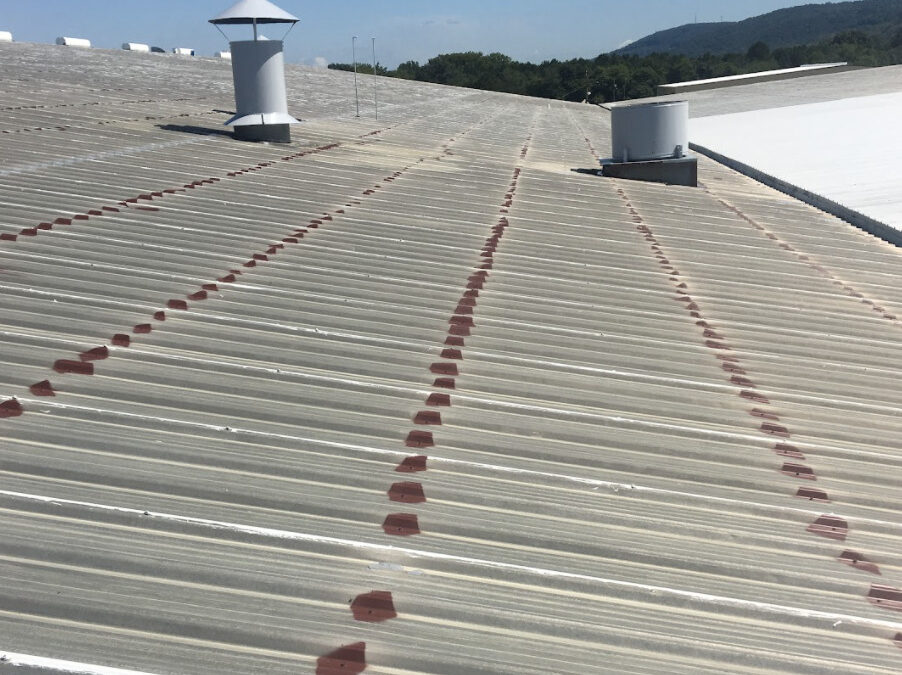
SCHEDULED ROOF INSPECTION AND MAINTENANCE
Most people associate the word “maintenance” with mechanical or motorized equipment, like your car or your home’s HVAC system. But many things that don’t fit that description are also subject to wear and tear, especially if they’re consistently exposed to the elements. For example, the working life of a commercial or industrial building’s roof can be significantly extended with a maintenance program created and executed by cool roof professionals.
A comprehensive liquid roof coating system maintenance program should include these four elements.
A documented history, including contracts, invoices, photographs of original construction and repairs, and any other relevant paperwork.
A regular schedule of inspections (conducted at least semi-annually) with documentation recording the results of the acrylic or silicone roof coating system.
The inspectors’ recommendations for addressing any problems they identified.
Records of any repairs or maintenance conducted, suggested by inspectors or not.
Individuals who are suitable to perform inspections include architects, engineers, roof consultant, or roofing contractors, and roofing consultants. The most important qualification is understanding the design and components of the elastomeric coating roof system. The best times to perform inspections are fall, to prepare for potentially harsh winter weather conditions, and spring, to assess the effects of those conditions.

These inspections should be guided by a checklist, with fields for recording problems and recommended actions. Although your list should be customized to the features of your specific liquid roofing application, most lists will include the following items.
– The exterior and interior roof deck
– Exterior and interior walls
– General appearance, including the condition of the surface and any membrane
– Fascia and roof edge conditions
– Flashing conditions, including wall flashing, base flashing, counterflashing, and copings
– Roof penetration sites, including equipment housing and base flashing
– Roof expansion joint covers
– Pitch pans
Unscheduled inspections should be performed in two other circumstances. The first is work done by non-roofers that affects the roof. A common example is the installation of equipment on the roof, such as an air conditioning system’s condenser unit. (It’s best to inform your roofing professional before this type of work is done, to be sure it won’t void your warranty.) The second is following any weather event severe enough to potentially cause damage, such as high winds, heavy rain, or hail. winds or heavy rain.
If roof leaks occur between inspections, it’s important to gather as much information as possible about the conditions at the time of the damage: the temperature, whether the rain was relatively heavy or light, the direction of the wind, and whether water continued to flow into the building after the rain stopped. This information is an important part of correctly diagnosing problems with the roof and identifying options for remediation.
These reports, along with the completed checklists and photographs of problem areas and completed repairs, should be incorporated into the documentary history of the roof. A list of all personnel with access to the roof should be maintained and regularly updated.
Establishing and maintaining an inspection and maintenance regimen for your roof will require time and energy, not to mention spending. However, given the importance of a safe and stable roof to your business, it’s clear that the benefits of identifying and fixing small problems before they can become big ones outweigh the costs.

A Roof Can Cool Your Building – and Your Neighborhood
We’re all familiar with the way that dark-colored objects absorb heat, from cars to clothing to asphalt. Yet we persist in roofing our buildings with dark-colored materials that trap heat and increase the cost of cooling interiors. A white roof can help to make your commercial or industrial building more comfortable, reduce your energy expenses, and even play a small role in reducing the rate of climate change. Obviously, any single roof will have minimal impact on a global phenomenon. But as part of concerted collective action, the effects could be dramatic.
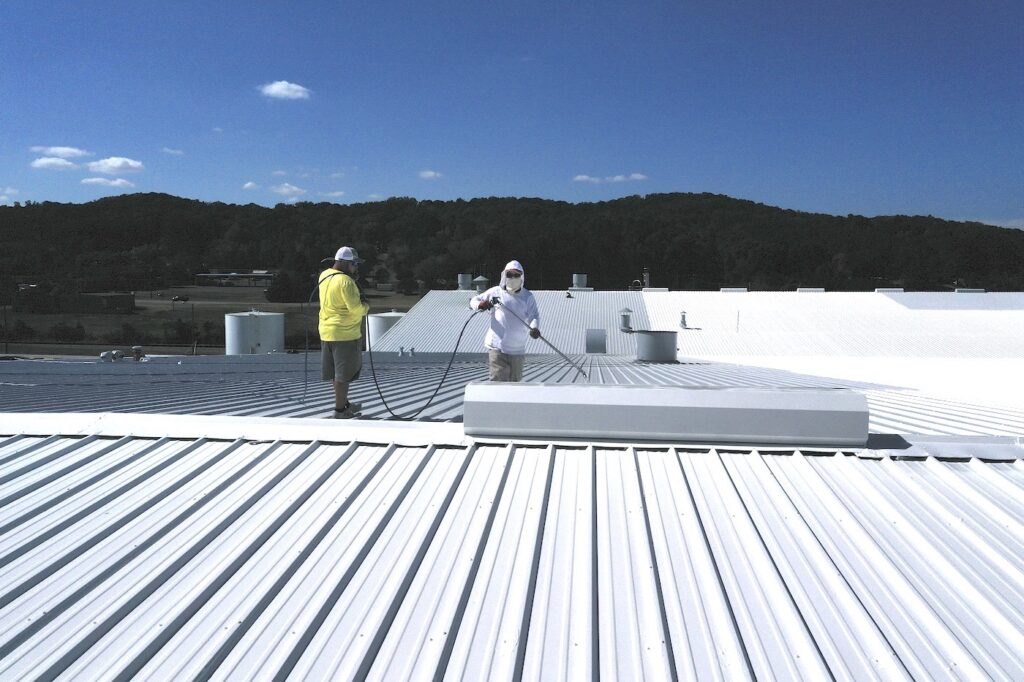
Urban areas, with substantial concentrations of buildings, roads, and parking lots, often have significantly higher average temperatures than the spaces that surround them. These regions have been named “heat islands.” The Heat Island Group at Lawrence Berkeley National Laboratory (which is a Department of Energy Office of Science lab managed by the University of California), works on figuring out ways to reduce heat islands by cooling buildings, cities, and the planet by making roofs, pavement, and cars cooler in the sun.
According to this group, the adoption of reflective substances for roofing and pavements would counterbalance 18 years of the emissions generated by cars currently in use, which number 600 million.
Changing just one 1,000-square-foot roof to white can reduce air conditioner use by approximately 20%. That much cooling would otherwise generate roughly half a ton of carbon dioxide annually. If the working life of a roof is 20 years, the total reduction can be as high as 10 tons. In addition, the average temperature and smog level in the local area will fall.
The trade-off is reduction of the roof’s ability to absorb heat and reduce energy costs when temperatures fall. However, Heat Island Group researchers have found that the increase in heating bills during winters is never more than 30% of the savings on cooling. They concluded that a white roof would save money for the owner of any building that needs cooling in summer and heating in winter.
The industry term for a variety of reflective roofing materials and strategies is “cool roofing.” The best time to install a cool roof is when an existing roof needs replacement. If your current roof isn’t near the end of its useful life, a roof coating can provide similar effects. The resulting energy savings and the longer life of your roof will more than make up for the cost, between $0.50 and $1.00 per square foot.
The Heat Island Group has developed a Solar Reflectance Index (SRI) to allow comparisons of cool roofing materials. The SRI hasn’t been widely adopted yet, but you can learn more about products you are considering through the Lawrence Berkeley National Laboratory’s Cool Roofing Materials Database, which is available on their website. In addition, the Cool Roof Rating Council offers a product directory that includes scores.
The most immediate advantages of an elastomeric roof coating are those that will appear on your monthly energy bills – or, rather, won’t appear, in the form of lower costs. As more people become aware of these benefits, adoption of this technology is sure to spread. Our climate problems are too large to be solved by any single intervention, but it’s encouraging to be reminded that sometimes what’s best for a small private business can also be good for the community that surrounds and supports it.

Saving Money with Roof Coatings
There’s no question that a decision to purchase a cool roofing system is a financially responsible one. Here’s a list of the obvious sources of savings.
– The working life of your existing roof will be substantially extended.
– Your energy costs will be fall significantly, particularly in summer.
– The full cost of the coating can be written off as depreciation on your taxes in the year of purchase, compared to multiple years for a replacement roof.

In addition, a roof coating functions as a form of insurance, giving you the peace of mind that comes from knowing your employees, equipment, and inventory are protected from the water damage that can result from a leak.
Those considerations would be enough to convince many potential purchasers — but wait! There’s more! Some utilities offer rebates and other incentives to encourage investment in roof coatings. A business can pocket a percentage of its expenditure – usually about 20% — while the utility can reduce the amount of power it has to provide during periods of peak demand.
If your state or local government or utility provider offers incentives of this kind, you’ll find it pays to act quickly. As roof coatings become more popular, some programs exhaust their funding quickly.
Tax credits for energy efficiency are offered by both the federal and Georgia state governments. Their principal goal is encouraging the use of renewable energy sources on residential properties, but owners of commercial buildings can also benefit.
These provisions periodically expire and have to be reauthorized, so if these incentives are an important factor in your decision to purchase a roof coating, you’ll want to see which conditions are currently in force. The Department of Energy and the Environmental Protection Agency jointly run a program called ENERGY STAR that evaluates products for energy efficiency, and its website (energystar.gov) is a great source of information.
Another way to offset the costs of a roof coating is local government support. A growing number of cities are mandating cool roofing standards for commercial buildings with low-slope roofs. One of their goals is certainly to reduce strain on utilities, but they’re also concerned about the phenomenon of “heat islands” in urban areas, in which roads, parking lots, and roofs covered with asphalt absorb so much heat that the average temperature rises across the entire community.
To encourage businesses to make the transition sooner, the city of Chicago established a program that funded approximately 55 grants of about $6,000 each. Researchers who study the problem hope that other cities will do likewise as American urbanization continues to accelerate. More people moving to cities means more construction and more roofs that can either absorb the sun’s heat or reflect it. With that trend in mind, some cities and states are now offering incentives to builders to encourage sustainable construction, including the application of roof coatings to new buildings.
While the cost of a roof coating may seem daunting initially, these tips can help to make the process more affordable for businesses of all sizes. You might experience some intangible payoffs as well. For example, a new roof coating can serve as a visual representation of your business’s commitment to environmentally sound practices.
It’s clear that government regulation of energy-efficient construction is only going to increase. It may be wise for your company to get ahead of the curve. The professionals at Energy Seal are ready to answer your questions and help you make the best decision for your circumstances.
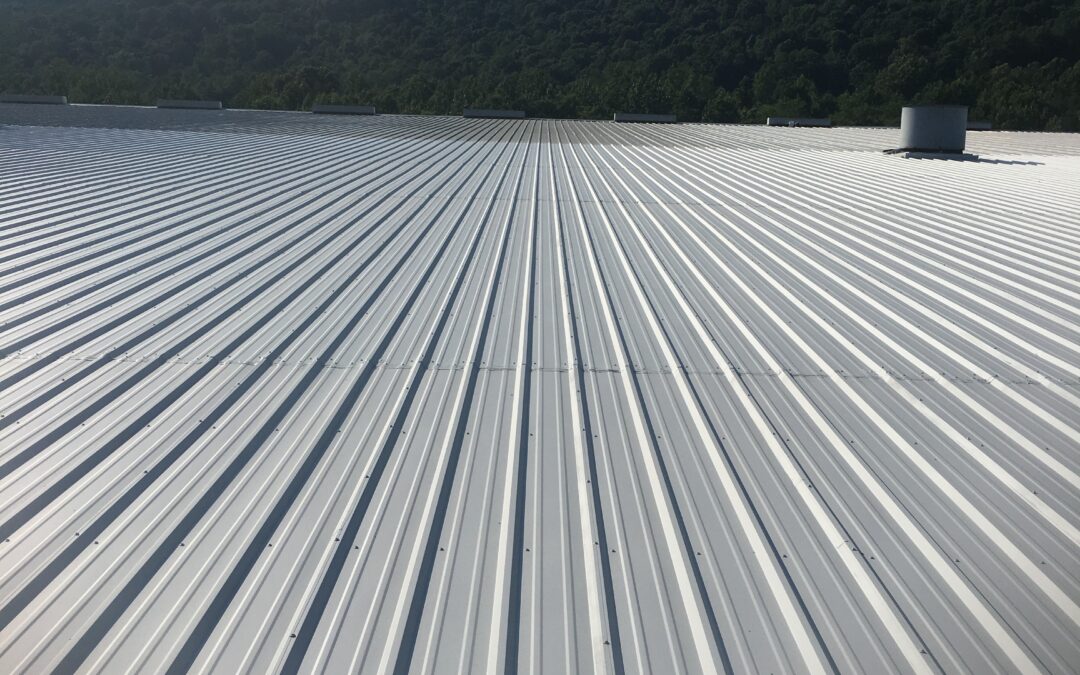
Sealing Your Metal Roof
Securely sealing a metal roof can be a daunting task. The most obvious, and most serious, problem is the lack of stability. The dimensions of a metal roof are constantly changing. One hundred feet of roof can expand and contract as much as two inches in any single direction. The perpetual stress that this process places on seams and fasteners is the cause of 90% of all metal roof leaks.
What can you do? There are really only two options: replace the roof at significant cost (and wait for the inevitable problems to recur) or apply an elastomeric roof coating to the existing roof.

Elastomeric coatings vary in quality and price. Higher-quality options that stretch further as the roof changes shape will be more expensive, but they remain a bargain compared to complete replacement.
In addition, elastomeric coatings offer dramatic energy savings. The surface temperature of a coated roof may be as much as 40 degrees cooler than the same roof uncoated. Thus it will cost much less to cool your building in hot weather. (This insulating quality ties back to leak prevention as well: Since your roof will be absorbing less heat, it won’t be expanding and contacting as much.)
The coating procedure itself is not complex, but a certain amount of preparation must be done ahead of time. You can certainly take on the task yourself, but the summary of the process that follows this paragraph is likely to make a qualified and experienced roof coating contractor seem very appealing.
First, the roof should be cleaned as thoroughly as possible with a high-power pressure washer. Then it should be carefully checked for rust. An inhibitor should be applied to any area that appears to be corroded.
The next step is applying elastomeric roof cement to fill space around any openings in the roof that allow any kind of access to the interior: air ducts, fans, pipes of any kind, and so on. Flashings should also be reinforced, or replaced.
After the cement has dried, any missing fasteners should be replaced, and all fasteners should be individually sealed with a product like Rivet Guard. Every seam should be sealed with tape, a thick elastomeric cement, or a combination of both.
As you’re scheduling the coating process, keep an eye on your local weather reports. The roof surface should be completely dry, since elastomeric coatings will not adhere to wet surfaces. You should be as certain as possible that no rain is predicted, and that the temperature will remain above 55°F.
Roof coating sprayers are available from home improvement retailers and other paint suppliers. The instructions for the coating product you choose will specify the appropriate sprayer head. Depending on the product, you may need to apply a primer coat, and two applications of two coats of the topcoat will be needed to wrap up the job.
When your new elastomeric coating has dried, you can feel confident that your roof is protected against the kind of leaks that can compromise the structural integrity of your building and threaten your equipment, inventory, and daily operations.

Stop Leaks With Roof Coating Systems
It might be tempting to ignore a minor leak in your business’s roof, or even more than one. Many of us spend our workdays “putting out fires,” dealing with routine problems of varying degrees of seriousness. Once you’ve dealt with the immediate issue by moving anything that’s directly under the leak and arranging to collect the water, it’s only natural to think about other matters that may seem more pressing. But even minor leaks in low-traffic areas can get much worse very quickly.
The best way to avoid this dilemma is regular inspection and maintenance by professional roofers. That level of planning ahead is even more likely to fall by the wayside as daily short-term problems accumulate. However, postponing maintenance and repairs can lead to major losses — some less obvious than others, as this list illustrates.
Property Damage:
The most obvious possibility is harm to physical property. Beyond outer roofing materials, substrate, and insulation, water can damage carpets, ceiling tiles, furniture, and equipment. Those items are at least replaceable – business documents may not be, whether they’re paper or digital. (Few of us devote enough attention and time to creating backup copies, much less storing them in a separate space.) Inventory may be ruined.
Operational Downtime:
You or your tenants may find your regular business activities disrupted for hours if not days as roofing materials and equipment are replaced. Preventative maintenance may also be inconvenient, but at least you have a degree of control over when it’s done.
Lost Revenue:
Businesses that don’t deal in physical products can also lose significant amounts of cash flow. If your company sells access to spaces, as hotels and self-storage and parking facilities do, the risks you face are just as serious as those of retailers. And if high moisture levels cause mold and mildew to spread, customers and employees may experience health problems. At the very least, the resulting odors will spread far beyond the area of the leak itself.
Legal Liability:
The cautionary tale of Peanut Corporation of America is extreme and therefore unusual but warrants attention. In 2008 and 2009, the company’s processing plant in the southwestern Georgia town of Blakely caused one of the largest outbreaks of food-borne illness in American history, which sickened more than 700 people and killed nine.
Employees reported that water entering the facility through multiple roof leaks was carrying in bird droppings, a common source of salmonella bacteria. That water could have landed on processing equipment or peanuts themselves. (It’s also possible that the large holes in the roof permitted more direct contamination: In 2008, an inspector reported a live bird walking and flying inside the facility.) The company was forced into bankruptcy and its owner was sentenced to 28 years in prison for multiple safety violations.
Replacing a leaky commercial roof can cost hundreds of thousands of dollars. Energy Seal Coatings advanced coating systems are a cost-effective alternative that will extend the working life of your roof even if its older, and there are tax advantages as well. Our cool silicone and acrylic roof coating professionals will repair any damage before the coating is applied, and the process will not disrupt your business. Spring rains are right around the corner. Request your roof coating system installation estimate now.

Cool Roof Construction Materials Offer Energy Savings
Even if you’re hearing the phrase “cool roof construction materials” for the first time, its meaning is clear: It’s possible to construct a roof that will stay cooler than some alternatives and can therefore help to keep temperatures inside the building it tops lower.
The conclusion that logically follows is the possibility of energy savings, since air conditioners won’t have to work as hard in hot weather to keep the interior temperature of that building down. What many people may not realize, though, is just how significant that contrast – and those savings — can be.
If you’ve ever gotten into a car that’s been parked in direct sunlight for a while, you know that objects can get a lot hotter than the ambient air temperature. For highly absorptive materials like asphalt, the difference between the surface temperature and the surrounding air can be startlingly high — as much as 100°F. (The technical term for these substances is “low-albedo.”)
For less absorptive (high-albedo) substances, that gap may be as low as 20°F. Early research found energy savings ranging from 7% to 15%, but more recent studies in California and Florida have found air conditioning loads – and therefore power bills — dropping by as much as 50%. That wide range is probably at least partly the result of differences in location. Regardless, it’s proven that a cool roof coating can reflect up to 90% of the heat from the sun, acting as an added layer of insulation for your roof.
You may have heard of the “heat island” effect. Densely populated urban areas are significantly warmer than the average temperature across a given region. For example, the average temperature across Metro Atlanta is as much as 10°F higher as the average in surrounding areas.
This phenomenon is largely due to the heat absorbed and retained by paved roads and parking lots, but dark roofs also play a role. The temperature difference also makes smog worse and increases rainfall (which might not be a problem if the rain was landing on soil, but instead intensifies runoff). To combat these problems, power companies in some areas now offer cash rebates to customers who install cool roofs.
To sum up, cool roofing materials can save you money in the short term, in the form of rebates on your utility bill, and the long term, as your HVAC system works less hard over the summer. To learn more about your cool roofing options, including liquid roof coatings and installation, contact Energy Seal Coatings.

Why Choose Elastomeric Roofing?
Whether you’re about to have a new roof installed or looking to repair or reinforce your current one, you should consider the benefits of a cool roof coating. For flat and low-pitch roofs, white elastomeric solar reflective roof coatings provide the most benefits.

What Is an Elastomeric Coating?
This type of coating is applied as a spray that dries into a seamless membrane. No additional sealant is required. Although it resembles paint in some ways, it contains significantly more solids, so each coat forms a thick layer.
Advantages
Weatherproofing. Elastomeric coatings stand up to all kinds of weather. Long-term exposure to sun and rain cause very little wear. Like all roof coating systems, it is reliably waterproof and prevents wind from widening any cracks in the roof where water and debris might be able to enter.
Easy maintenance. Only periodic cleaning is required. There’s no additional risk of slipping and falling to people who walk on it, and foot traffic can’t chip or otherwise damage it. On the rare occasion that damage does occur, repairs are just reapplications of additional coats.
Energy efficiency. This is one of the dramatic advantages of elastomeric coatings. Conventional asphalt roofing typically consists of a gray composite on top of a black substrate. Unsurprisingly, about 75% of the solar energy that hits this combination is absorbed as heat.
By contrast, much of that energy bounces right off of white reflective roof coatings. When they’re first applied, that amount is roughly 80%. These ratios are almost exact opposites: Elastomerics repel four times as much as they absorb, while traditional materials absorb three times more than they reflect.
As you might guess, the result is a substantial reduction in power costs. In addition, these coatings can help to get your property rated by ENERGY STAR® or the LEED Green Building Rating System®.
Durability. This is another area where elastomerics stand out. The installation of asphalt roofing is itself energy-intensive, as is the process of replacing it. Since these roofs last an average of 8 to 10 years, this cycle burns through a lot of supplies. The initial elastomeric coating can be applied directly to an existing roof, creating no waste.
Once in place, the useful life of a white solar reflective roof coating can be extended much further. Aging layers don’t need to be removed — instead, additional coats are added to reinforce those already in place. The result is a significant reduction in the amount of construction materials destined for landfills.
The Best Choice
The up-front costs are higher than those associated with other coverings, but so is the value. The energy savings alone justify the expenditure in the long term, not to mention the extension of the useful life of your roof by 10 years or more. By combining toughness with energy savings, elastomeric solar reflective roof coatings offer a truly sustainable – and economically smart — roofing solution.
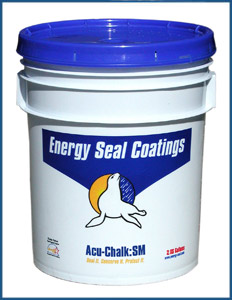
Your Aging Commercial Roof: Repair, Recover, or Replace?
If your roof is nearing the end of its useful life, how can you know when the time you have bought with intermittently patching has run out? The most obvious clues are leaks that continue after repeated visits from your roofer. Once a roof becomes brittle and starts to split, patching is no longer enough. Your choices at that point are more expensive, but the alternative is wasting your limited budget avoiding the inevitable.
Waiting can also drive up the cost of repairs. If leaks are allowed to continue, the interior of the structure may be damaged, multiplying the ultimate expenses that initially seemed high. Another factor to consider is the relatively low level of disruption that roof work causes for the people who work in the building, as compared to interior restoration.
Do the math
The best first step is hiring a consulting engineer or architect to survey your roof, list your options, and provide rough estimates of the costs of each of them. You may well learn that repairs, recovering, or the liquid application of a coating will be sufficient for the time being. But if the need for action seems imminent, think about your budget and the length of time you would want a replacement roof to last.
To use a simple example, consider your choice to be between two options: 10 years for a basic roof with standard-grade materials and 20 years for a more elaborate and durable option using higher-quality materials. Take the middle of the approximate price range to replace the roof and divide it by the number of years you would like the new roof to last. If the result is less than the cost of the repairs or not much more, it’s time to replace the roof.
Consider a coating
You may find that a coating, preceded by an appropriate cleaner and primer, can extend the useful life of your existing roof. If you install a new roof, a coating can definitely increase its longevity.
– Silicone roof coatings are designed for flat roofs where water may pool. They form a flexible membrane that stays waterproof in a wide range of weather conditions.
– Acrylic roof coatings are suitable for pitched roofs. They are “elastomeric,” which means they incorporate more solids than paint and therefore form thicker layers when applied to a surface.
– Both types are formulated to reflect the sun’s rays rather than absorb them, lowering the temperature inside the building and reducing energy costs. One “cool roof” acrylic variant was created to maximize this effect.
Moving forward
Whether you’re repairing, recoating, or replacing your roof, you should create and implement a detailed maintenance plan, with the assistance of a qualified architect or engineer if need be. A professional can not only carry out regular inspections and moisture surveys, but also provide specific guidance regarding repairs, reapplications of protective coatings, and ultimately, replacement.
All roofs will eventually need to be replaced. Information and preparation will help make that decision less stressful when the time for it arrives.
Get in Touch
Location
Headquartered in Atlanta, GA








